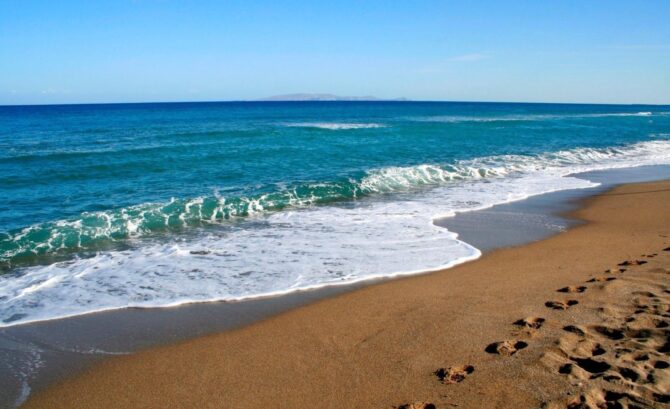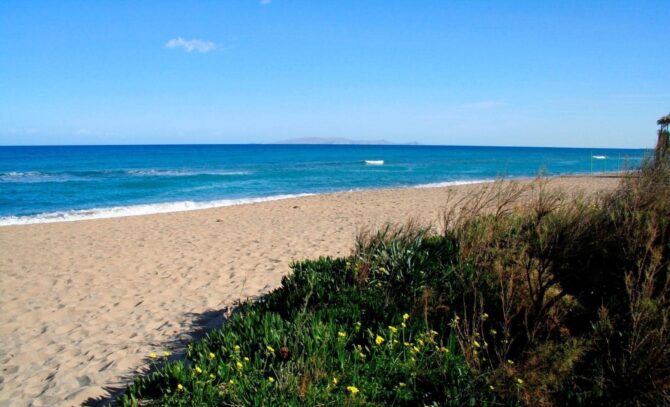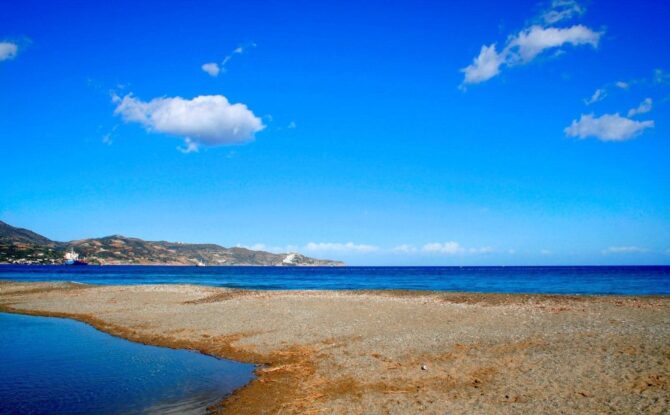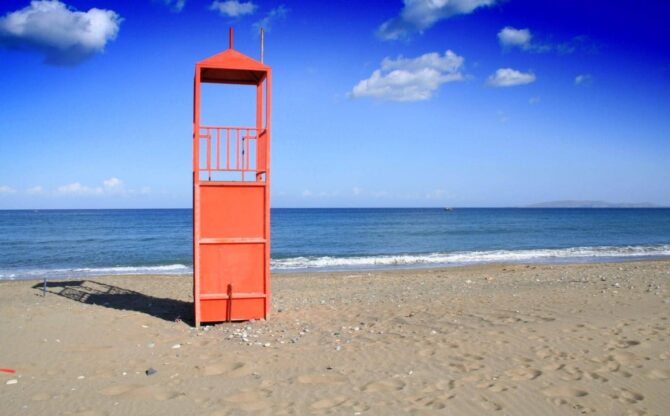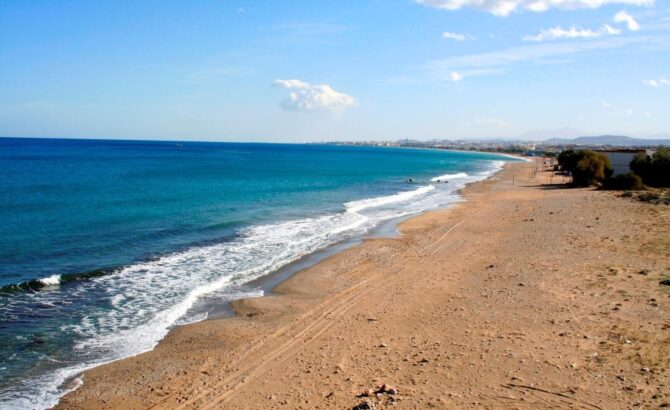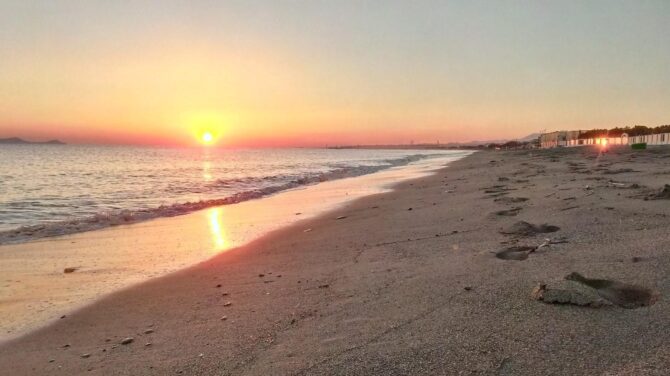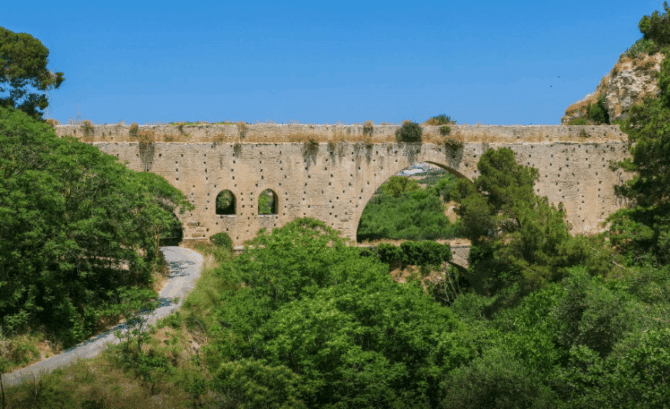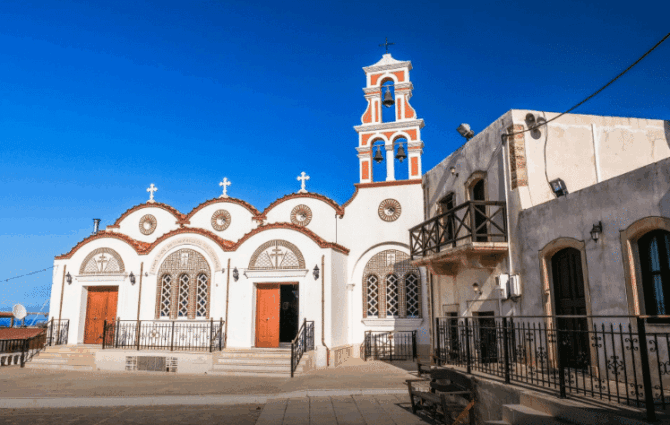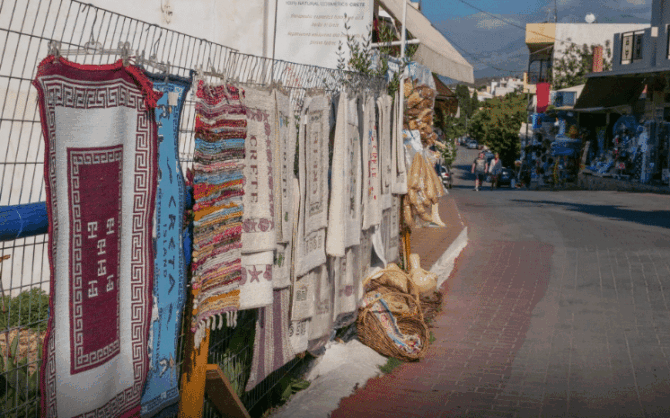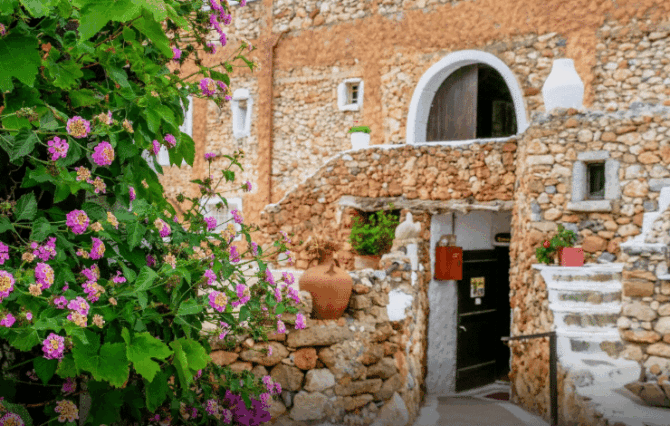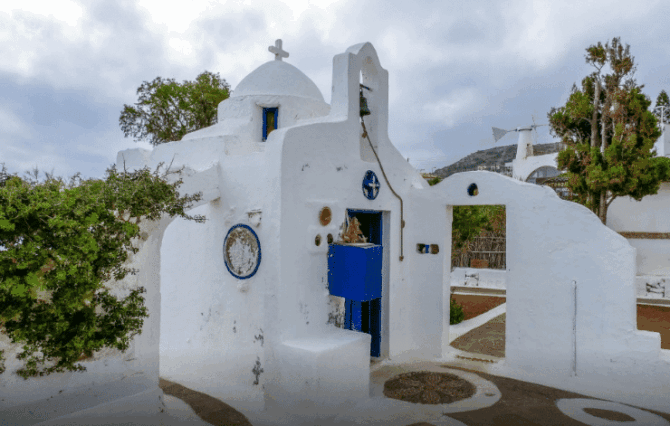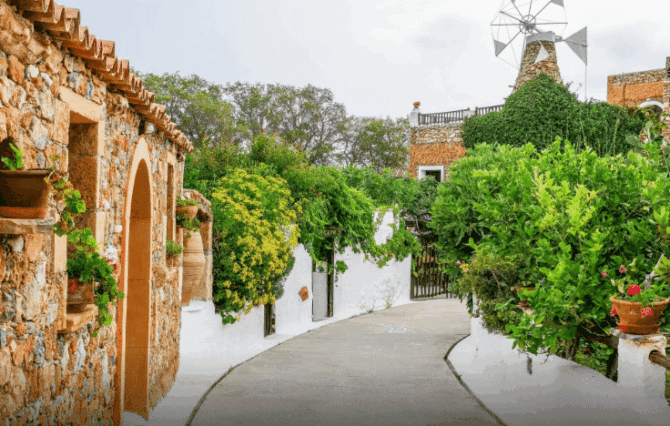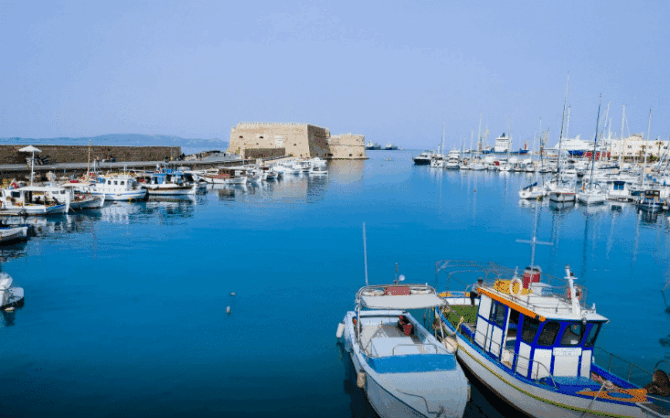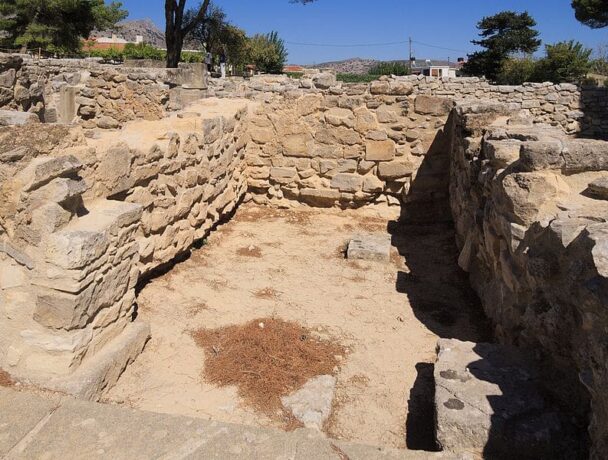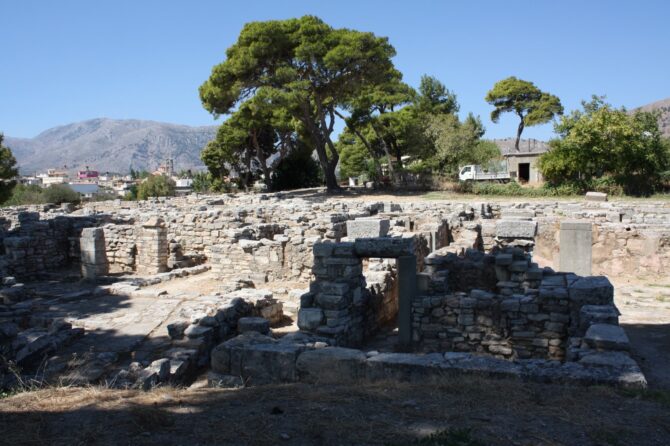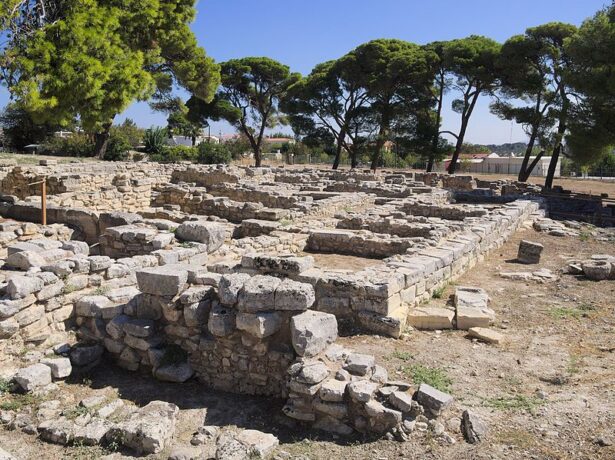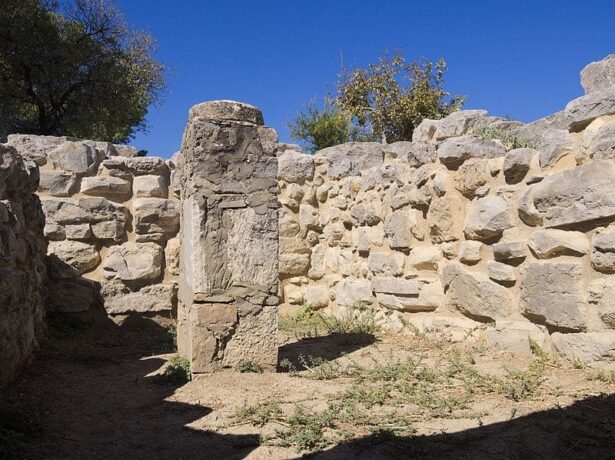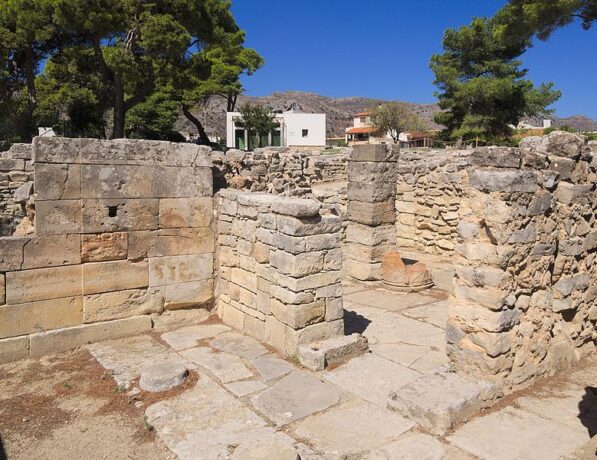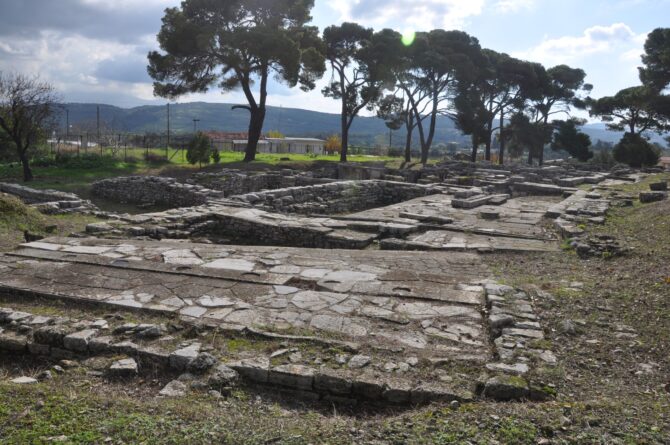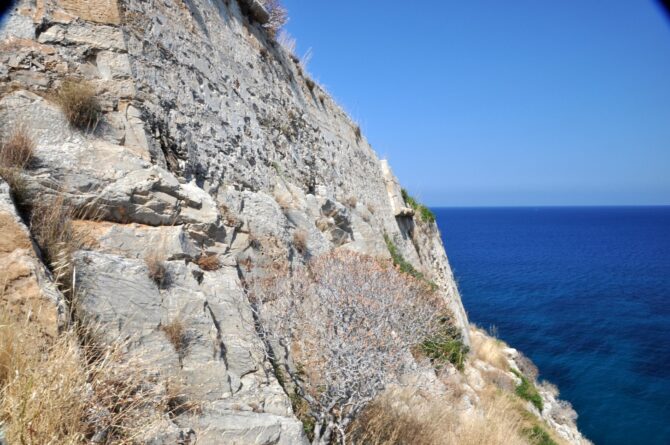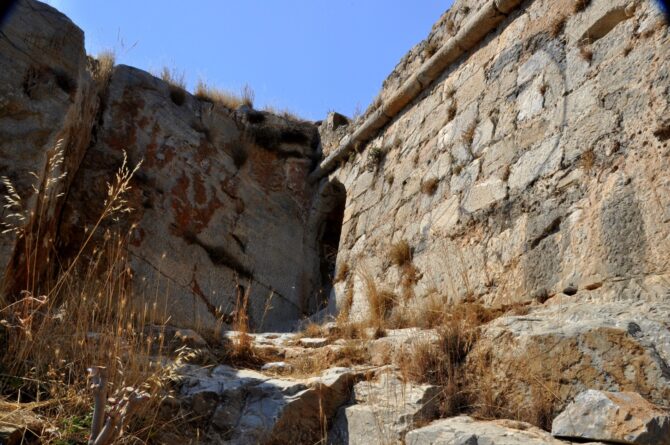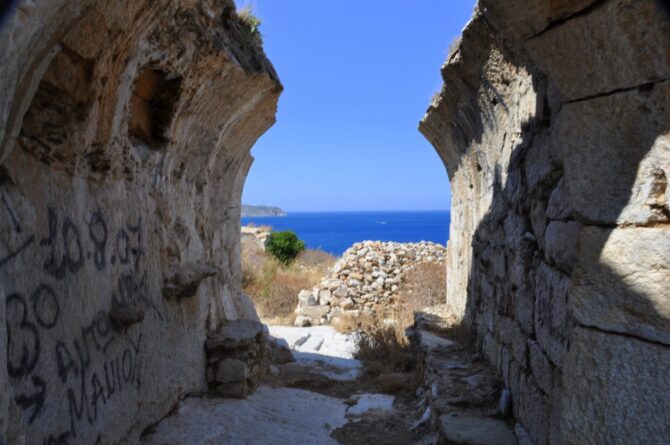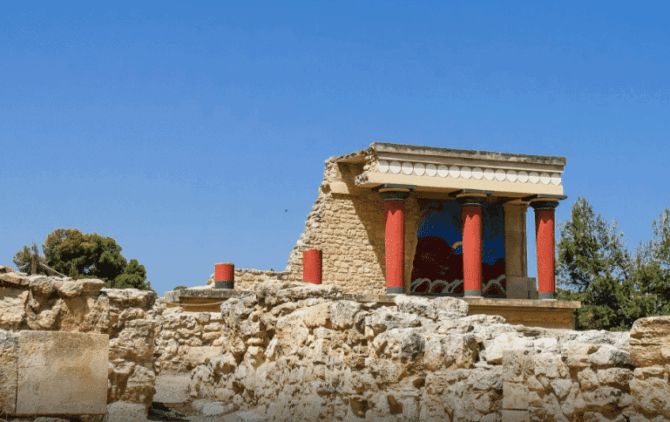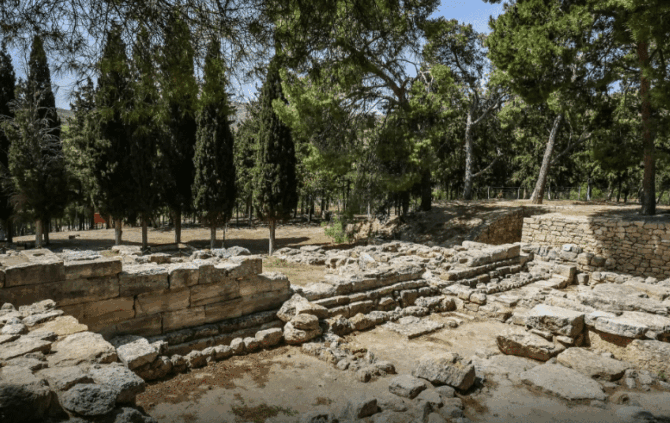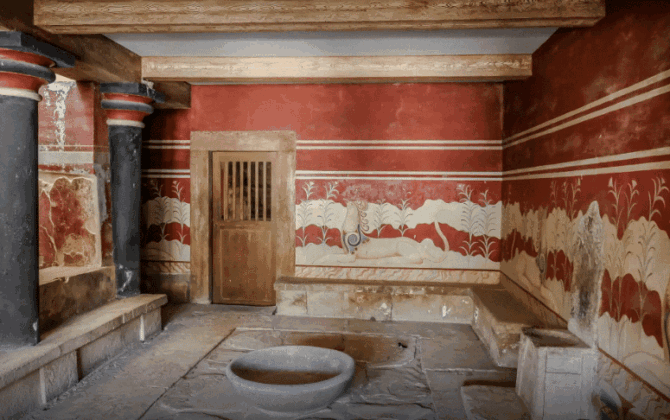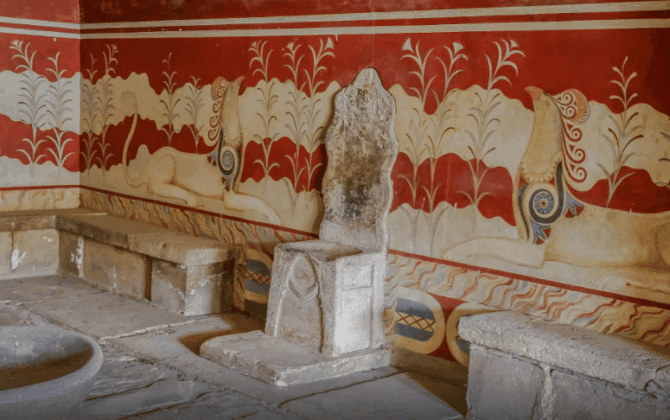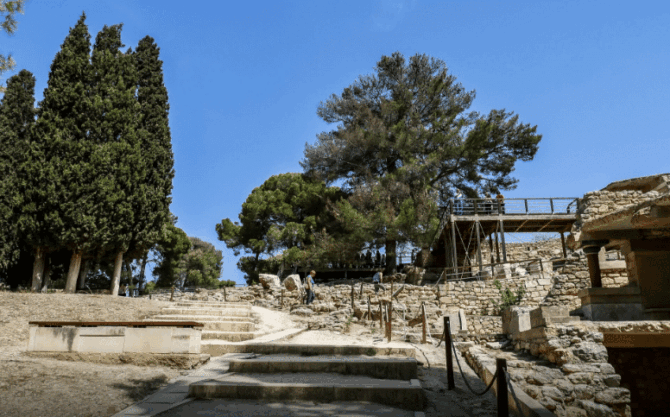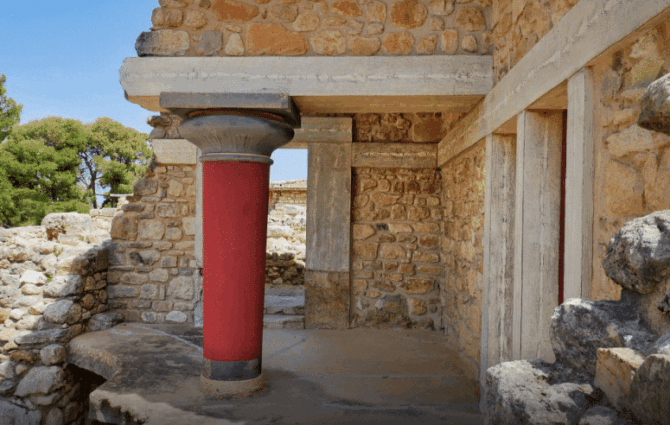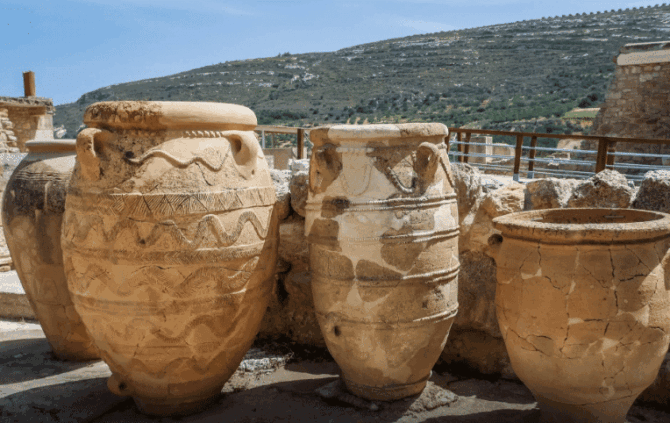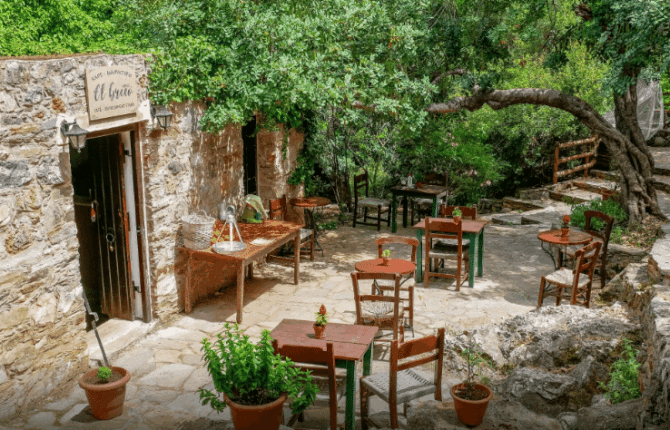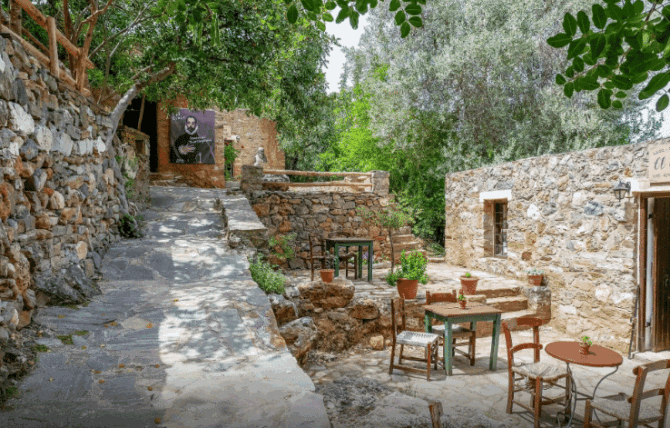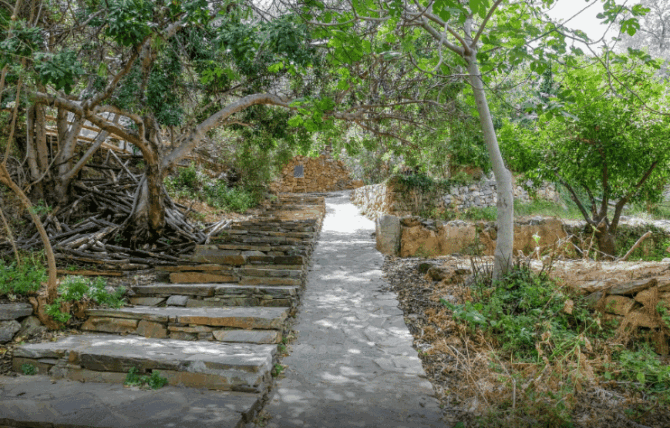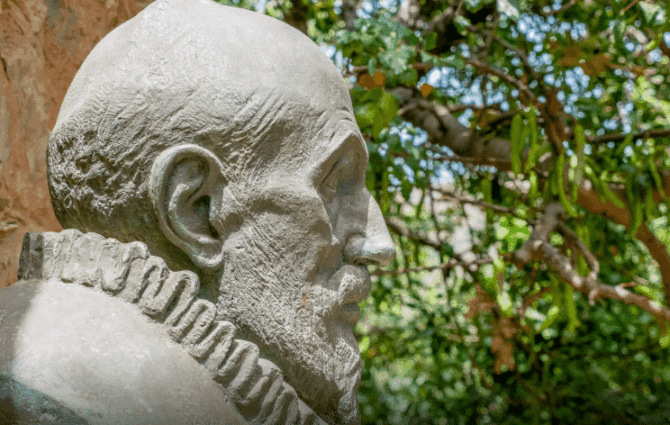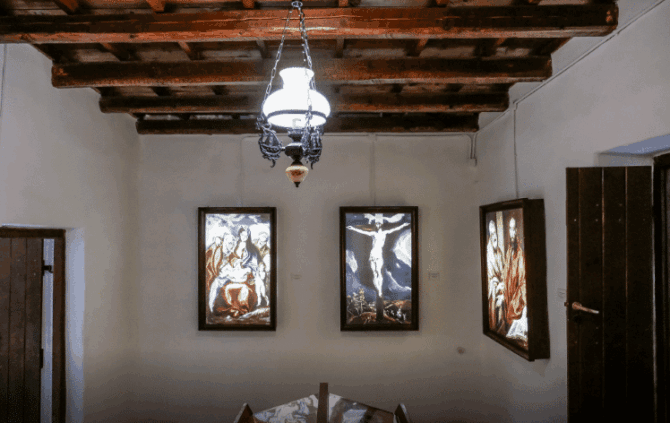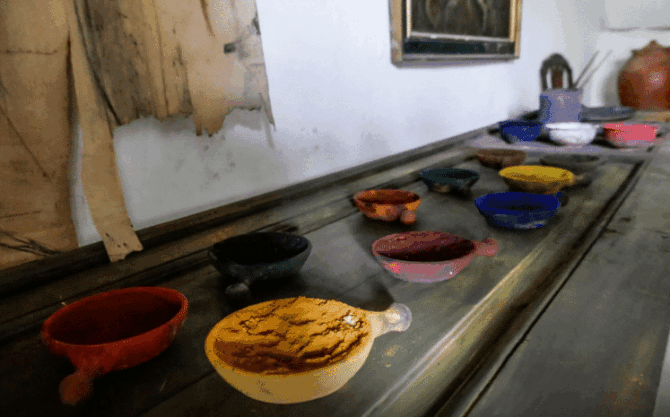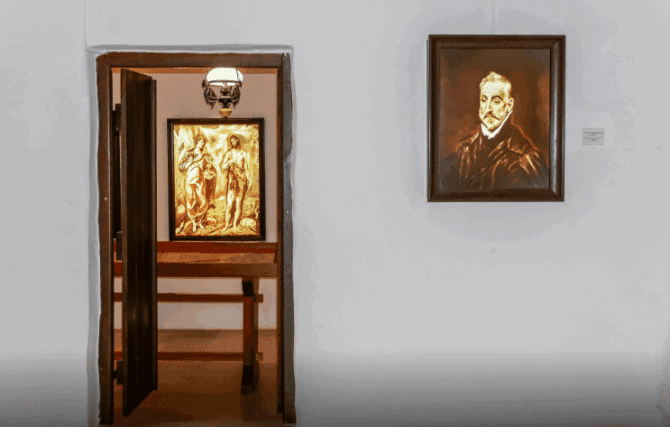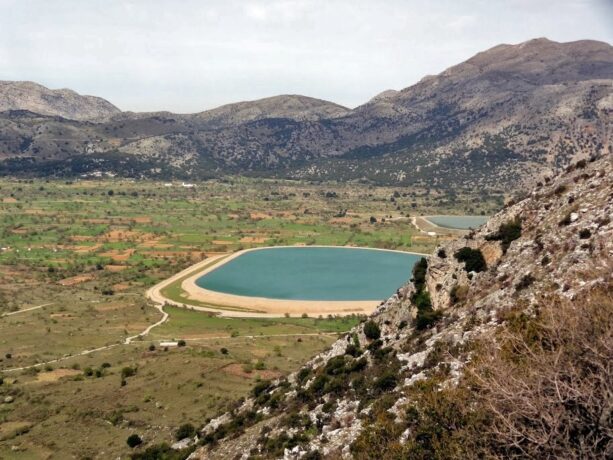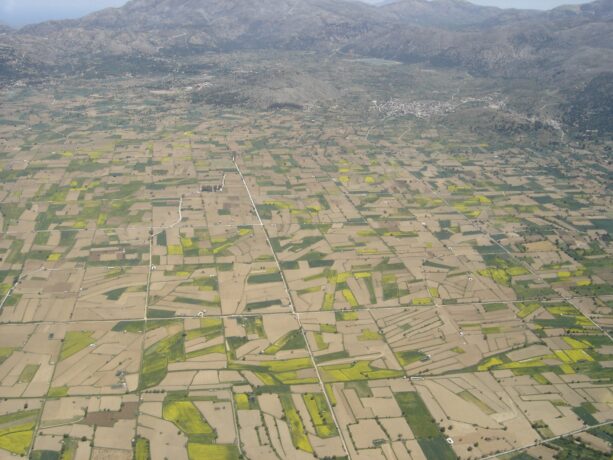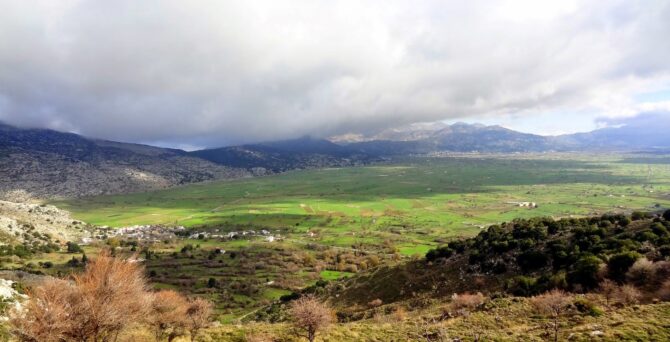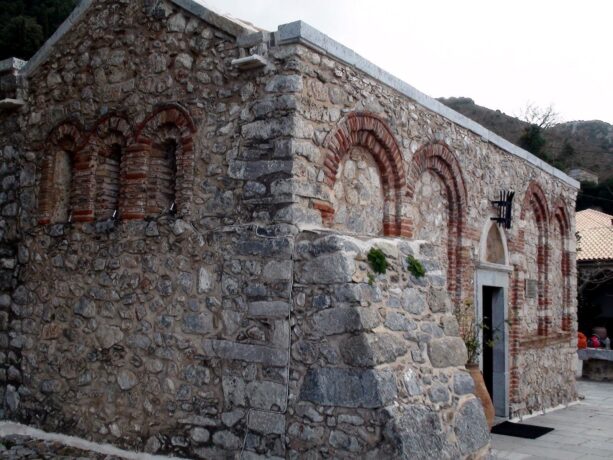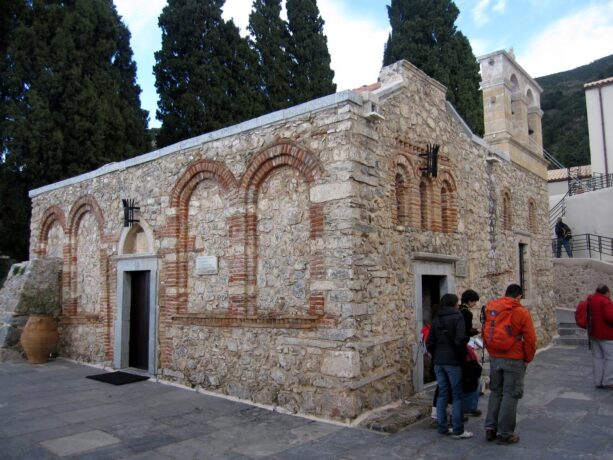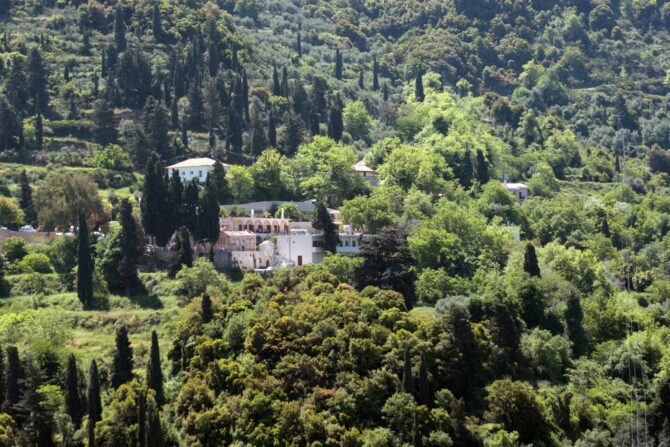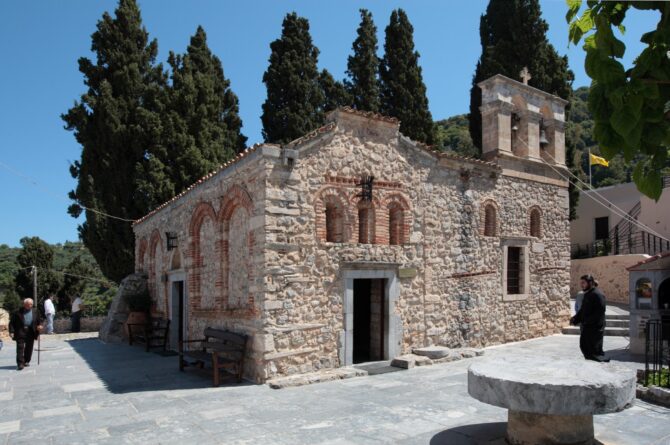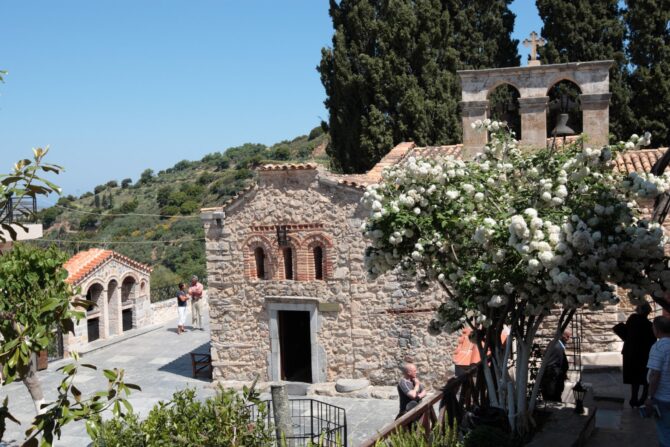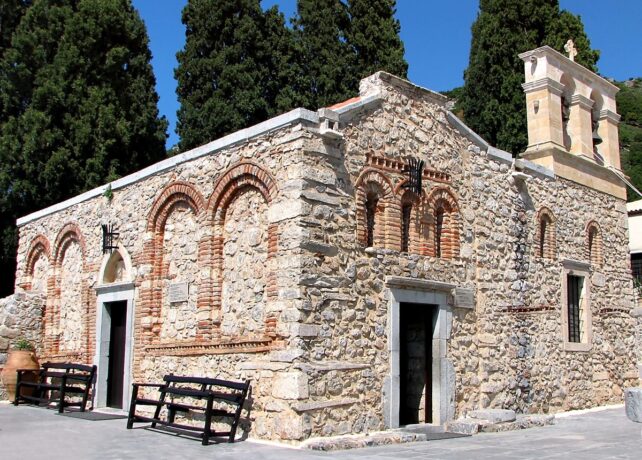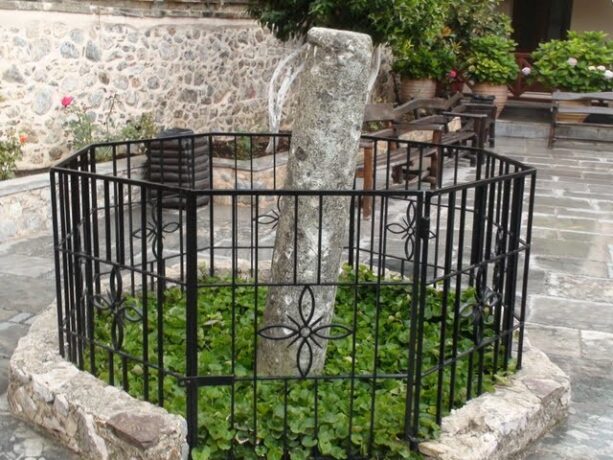The village of Amoodara is located 8 km west of the capital of Crete, Heraklion. This resort area is famous for its beaches covered with golden sands. Along the beaches stretches the only street of the village, which serves tourists as evening promenades and entertainment. It houses taverns, shops, hotels, tour desks and other resort facilities, including bus stops from Heraklion.
There are several reasons why tourists choose Amoydar as a vacation destination. First, close to the airport. Taxis are inexpensive, minibuses run regularly. Secondly, the capital of the island is nearby, where the main cultural events take place, the main museums of Crete are located, night clubs work, interesting restaurants are open. Thirdly, the proximity to the seaport of Heraklion. From here you can take a ferry to Santorini or continue your holidays in Athens and Greece, getting there by water.
Amo dara is located on the shores of the Aegean Sea. Winds often blow here, raising high waves. This attracts fans of all types of surfing. Along the coast there are huge boulders, but in some cases they act as breakwaters. If travelers are not confused by the nearby airport, the noise from taking off and landing planes, then they can safely go to the village. To date, guests are ready to accept 35 objects, including hotels of different categories of comfort and prices. Amoudera can be a good launching pad for trips around the northern part of Crete and exploring its sights.
Attractions Ammoudara on map
Amomu Dary Beach
The entire coastline of the village is divided into beach areas. In total, they stretch for 5 km. They start from the Almiros River and end a kilometer from Heraklion. The area has been repeatedly marked with the Blue Flag for cleanliness, despite the fact that a power plant has been built on the western edge of the beach. It pretty much spoils the overall impression of the recreation area. The beaches themselves are outstanding. They are fully landscaped. Separate plots are owned by hotels, but there is always a distance between them, where lovers just lie on the hot sand rest. If you walk along the coastline, you can find secluded areas.
On the well-maintained beaches there is all the infrastructure – water activities, rescue service, children’s and volleyball courts, cafes and bars. There is a diving club on site. It organises underwater walks to the local cliffs. There are sea urtics, which always attract the attention of tourists. A windsurfing school was opened. Inventory can be taken at rental offices, which are located along the coast. Thanks to the constantly blowing winds, you do not have to wait long for a wave here.
The most attractive beaches for recreation are the hotels: Marilena hotel 4*, Ikaros Suites, Amounda Bay 4* (specializes in family holidays with children). The owners of the last of these complexes have provided for the interests of those who leave for excursions. For them, an early breakfast, late dinner are served, and a lunch box is going on the road (3 meals a day is included in the payment for accommodation). You can go on tours with a group or book individual trips with a guide.
Heraklion
Acquaintance with the surroundings should start with the capital of Crete Heraklion. Even in such a large city, you can make a route for one day, choosing the most interesting objects. Since it is almost impossible to park in the city center, you need to go to the port and leave the car in a paid parking lot. In this case, the first excursion object will be the Venetian harbor. There are preserved docks built in the 17th century. In the port there are large cruise ships and private yachts. All together they present a picturesque picture suitable for an exciting photo shoot. The harbor gradually merges with the territory of the fortress of Kules. Entrance 2 euros. It is better to walk with a guide and listen to a fascinating story about the heroic past of the citadel. The fortress is a kind of gateway to the Old Town. On the pedestrian street there are souvenir shops, boutiques and restaurants. Among the attractions – the Church of St. Titus (built in 961), the Venetian loggia (17th century), the lion fountain of Morosini.
After a snack in one of the taverns, you can go to the square, where there are two Orthodox churches – the Cathedral of St. Mina and the Church of St. Catherine (16th century). Further, after taking a picture at the Bembo Fountain, along the street of 1866 you can walk to the old market of Heraklion. From it comes the shopping street of Daedalus. There are many shops and the atmosphere itself is conducive to shopping. The street leads to the Central Square of the city. From the point of view of a tourist, it is not very interesting, so it is worth walking to Stefanu Xanthoudidou Street, house 2, where the Archaeological Museum is located. By and large, it is worth coming here only for the sake of visiting it. The exposition is located in 20 halls. If you plan further acquaintance with the sights of Crete, then it is worth buying a combo ticket on which you can visit the Palace of Knossos.
Official site of Heraklion: https://www.heraklion.gr/en
Excavations of ancient Tilysos
Ancient Tilissos is an area in Heraklion where three large manors of the new palace period (1550-1450 BC) were excavated. Thanks to the found exhibits, it became known how the lovers lived in the Minoan era, what they did, ate, organized life. The complex was left open to visitors. Here you can see the ancient water supply and sanitary facilities for garbage collection, residential and utility rooms, the first anti-seismic fortifications in the walls, household items – utensils, a press for oil and winemaking, dishes, etc. All artifacts testify to the high development of society in the Minoan period. Tilisos today has become a kind of ethnic center, in which cultural events are regularly held under the single name “Cretan Evenings”. Here you can finish the excursion day and then go back to Amoudara or stay in Heraklion to continue the tour. Hotels in the capital should be booked in advance.
Tilissos Village Website: http://www.tylisos.gr/
Address: Tilyssos village, Heraklion, Crete, Greece
Paleokastro Fortress
In the bay of Voydokilla on Mount Corifacion are the ruins of the old fortress of Paleokastro. It was built by the Frankish crusaders in the Middle Ages. Previously, this place was the ancient acropolis of the city of Kütei. In the Myceean period, King Nestor lived here (about the 13th century BC), who according to legend participated with Odysseus in the Trojan War. He left behind a memory in the form of a cave located under the fortress. According to mythology, Nestor kept here herds of cows that Hermes stole from Apollo. A large number of archaeological finds dating from the Neolithic to antiquity have been found in the cave. The fortress is located on the very top of the mountain. From it there were several sections of walls with loopholes, the remains of the Berkil, the vault of the main gate that collapsed after the earthquake. Here is the Mycenaean tomb, where, according to legend, Nestor’s son Prince Thrasemidis was buried. the walls of St. Mark’s Church have also been preserved on site.
Address: 14th km from Heraklion towards Agia Pelagia, Crete, Greece
Palace of Knossos
The largest of the palaces of the Minoan period is located 4 km from Heraklion on the territory of the ancient city of Knossos. The ticket costs 15 euros, it is recommended to take a single ticket to visit the Archaeological Museum and the Palace of Knossos, which will cost 20 euros. Children under 18 years of age are allowed free of charge. This place is associated with one of the most heroic and romantic myths of Ancient Greece – about the labyrinth of the Minotaur. Indeed, the layout of the palace is so confusing that a stranger could easily get lost in the endless corridors and passages. The ruins are well preserved, but the English scientist Arthur Evans, under whose leadership the excavations were carried out, decided not to leave the palace in the form in which it was found. Many buildings were reconstructed with concrete and rebar. Over the years, it is very difficult to determine where the walls of the Minoan era, and where newly erected. But this does not detract from the importance of the object as a historical landmark. Tourists are waiting for fascinating excursions on the territory of the architectural monument.
Address: Knossos Palace, Minoiton, Heraklion 71409
Fådele Village
Lovers of art and painting will never pass by the village of Fådele. Here is the El Greco Museum. It is believed that his birthplace is the village of Fådele, although this fact is disputed by the scientific community. But the museum staff is sure that it was here that the great artist was born, spent his childhood and youth, mastered the basics of icon painting. He lived opposite the chapel, where copies of documents and sketches of paintings are still kept. Paradoxically, there are only two original works by El Greco in Crete, which are exhibited in the Historical Museum of Heraklion. In addition to the artist’s house in the village, you can visit the Byzantine Church of the Introduction to the Temple of the Blessed Virgin, the monastery of St. Panteleimon, stroll through the streets and surroundings. Fodele was built on the site of the ancient port city of Pantomatria, which was mentioned in his writings by Pliny the Elder.
El Greco Museum website: https://www.facebook.com/El-Greco-Museum-Fodele-728646633829132
Museum address: 27 kilometres western to Heraklion, Crete, Greece 71500 Heraklion, Greece
Krasi Village
Continuing the journey west of Heraklion, the road is sure to lead to the foot of Mount Selena. Here is a small village krasi, which grows plane tree covering 20 meters and age of 2 thousand years. On the outskirts of the village is a stone water tank, built in 1890. This is a large rectangular structure with three arches and special holes for animal watering bowls. Both attractions are connected by one street.
Address: 47 km west of Heraklion, Krasi, Crete, Greece
Lassithi Plateau
The tourist route can be continued to the Lassithi Plateau. On the way to look at the monastery of Kera Kardioditissa (entrance 2 euros). Here is a copy of the miraculous icon that helps to cure infertility in women. Then you can visit the museum of homo sapiens (entrance 5 euros) and explore the surroundings from the viewpoint, have a snack in a cafe. From the observation deck you can see the Valley of Lassithi. Previously, white windmills served as a landmark, but now they have been removed. Only picturesque landscapes with a few villages remained. The plateau is interesting because it is the entrance to the cave of Zeus. It is located on the slope of the Dikti mountain range. According to mythology, it was in it that Rhea hid with the newborn Zeus from the bloodthirsty Kronos. Not far from the entrance to the cave there is a tavern “Diktamos”. It is a new attraction of the Lassithi Plateau.
Address: 53rd km on the road Heraklion – Agios Nikolaos, Crete, Greece
Monastery of Our Lady of Kera Kardiotissa
A visit to this monastery is usually included in an excursion tour to the Lassithi plateau, as it is located near the village of Kera, located in the valley. The monastery was first mentioned in written sources in 1333, although it was founded in 961. The foundation of the monastery is associated with the miraculous icon of the Virgin of the Heart (Cardiotissa), the original of which is now stored in Rome. She was kidnapped and taken away many times, but each time she returned to the monastery until she was stolen by a Venetian merchant and transported to Rome. From there, the relic never returned to its homeland. On the territory of the ancient monastery it is interesting to see the remaining architectural buildings, frescoes in the oldest part of the temple.
Address: Lassithi Plateau, near kera village, Crete, Greece
Tourist organizations of Amo dara will provide an opportunity to visit all the attractions of interest. Vacationers themselves can choose the route or use ready-made bus tours.

